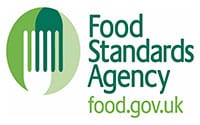The desire for ‘human grade pet food’ is really about giving our four-legged pals a high nutritional standard. Let’s take a closer look at what constitutes human grade pet food and why it’s important.
Despite common perception to the contrary, pet food in the UK is well regulated. When it comes to human grade standards, the focus is largely on meat and the vast majority of animal materials used in pet food are passed as fit for human consumption. This means the material must be free of transmissible disease, in contrast to the US where dead, dying and diseased animals can be used.
The labelling terms we use in the UK include ‘human grade meat’ or ‘human grade ingredients’. Before you grab a spoon, this doesn’t mean the end product is safe for pet owners to eat. The processing for making pet food or meat meal usually renders it unsuitable for human consumption but still safe for pets.
Feed, food and human-grade pet food
There is an important difference between feed and food. Most animal food is referred to as ‘feed’, as in cattle feed, but for pets it’s always food e.g. dog food. Perhaps our close association with dogs and cats altered the language of the meals we offer them. Certainly, they’re considered part of the human family, so it seems appropriate they would have a high standard of food. What’s more, as the food is to be brought into and prepared in a home setting, usually the kitchen where other food is prepared, and then handled by human owners, it’s crucial that it’s relatively safe.
FSA regulations around pet food
 This brings us to those stringent regulations. The Food Standards Agency (FSA) is responsible for animal feed legislation which covers the manufacture of feed for non-food producing animals including pet food and pet treats. In December 2020, they published guidance applicable to England, Wales and Northern Ireland to support food businesses and their enforcement agencies in managing the risks from the production of certain pet food in establishments that also produce food for human consumption.
This brings us to those stringent regulations. The Food Standards Agency (FSA) is responsible for animal feed legislation which covers the manufacture of feed for non-food producing animals including pet food and pet treats. In December 2020, they published guidance applicable to England, Wales and Northern Ireland to support food businesses and their enforcement agencies in managing the risks from the production of certain pet food in establishments that also produce food for human consumption.
When declaring ingredients, pet food manufacturers have the option to do this by category, for example, oils and fats or meat and animal derivatives. It’s possible to approve processed pet food production in domestic premises, however that would rely on an adherence to all conditions applicable to other pet food plants. This includes the requirement to carry out bacteriological sampling and have a feed safety management system in place based on the principles of Hazard Analysis and Critical Control Points (HACCP). If you use materials of animal origin in your products (includes milk, eggs, fish and shellfish), then you will also need to register with APHA under the animal by-products rules.
Please note that it is not permitted to make a commercial raw pet-food product from your domestic kitchen.
Considering the diversity of dogs
While the safety of dog food is paramount, calorie levels and ease of digestion should also be considered as highly important. Dogs are exceptionally genetically diverse, bred for differing purposes and adapting further over time. What this means from a food point of view is that their nutritional requirements vary just as widely and there can never really be a one size fits all approach. For instance, while meat is often considered the best form of protein for dogs, it comes with issues of sustainability and some dogs find it hard to digest (see our last blog here). Some owners are moving over to vegetarian and vegan food and seeing promising results. Another factor is that as dogs grow, their dietary needs may change in accordance with their age and activity level.
If you’d like to know more about developing high quality, nutritionally-rich, FSA-approved dog food, we can help so contact us today.
